Table of Contents
Cats are very interesting animals which behave in their own unique ways of expression, and the most saying part of body language one can find on a cat is the tail. Unlike dogs, when the tail wags, it is a joyful thing – whereas the tail movement of a cat might mean several things and reactions. Knowing what your cat’s tail is trying to say can help you create a much better bonding with your furry friends.
The swishing or wagging of its tail does not necessarily mean that the cat is happy about something. It could also be because of being curious, frustrated, or scared. The manner in which a cat swishes its tail may be an indication of how she feels and what she might do next. A slow, gentle movement; quick flicking; it all means something.
The meaning of a wagging tail in cats must put them in context with other signs the cat might show. It can have its ears wiggling to one side or the other, moving its body in rhythmic ways, or even the look in the eyes-these tell the mood of the cat. All this makes one quite understand what their cats are saying and avoid misunderstandings that sometimes distort the relationship with cats.
Learning the many reasons behind a cat’s wagging tail will therefore find you well-equipped to better take care of your pet and communicate with your pet. Whether your feline friend is showing an interest, wants to play, or is advising you to keep away, the tail is one of the body parts with which it expresses itself.
Knowing Feline Body Language
If you examine the way a cat uses its body language, you will come to see that they basically pass their message through their bodies. The tail is one of the prominent ways that their mood and emotions get portrayed. Cats do not “talk” like people do, but they have a way of relaying messages that a person can learn to understand when it is happy, scared, angry, or simply curious.
Tails Are One Important Form of Communicating Emotions
The tail is one of the most expressive parts of a cat’s body. Cats use their tails to show what they are feeling sometimes in a gentle flick that has them look relaxed or, on a speedy whip, excited and agitated. While a dog wags his tail mostly to convey happiness, a feline may indicate a range of emotions with her tail movements. For example, if the tail is up in the air, it means the cat is confident and happy; on the other hand, when down and swishing, it may suggest that the cat is threatened or edgy.
Knowing how to interpret such micro-expressions will not only deepen your relationship with your cat but also prevent stressful situations that may arise due to your cat’s agitation or frustration. You will find some essential knowledge about the inner world of your cat by closely following its tail movements.
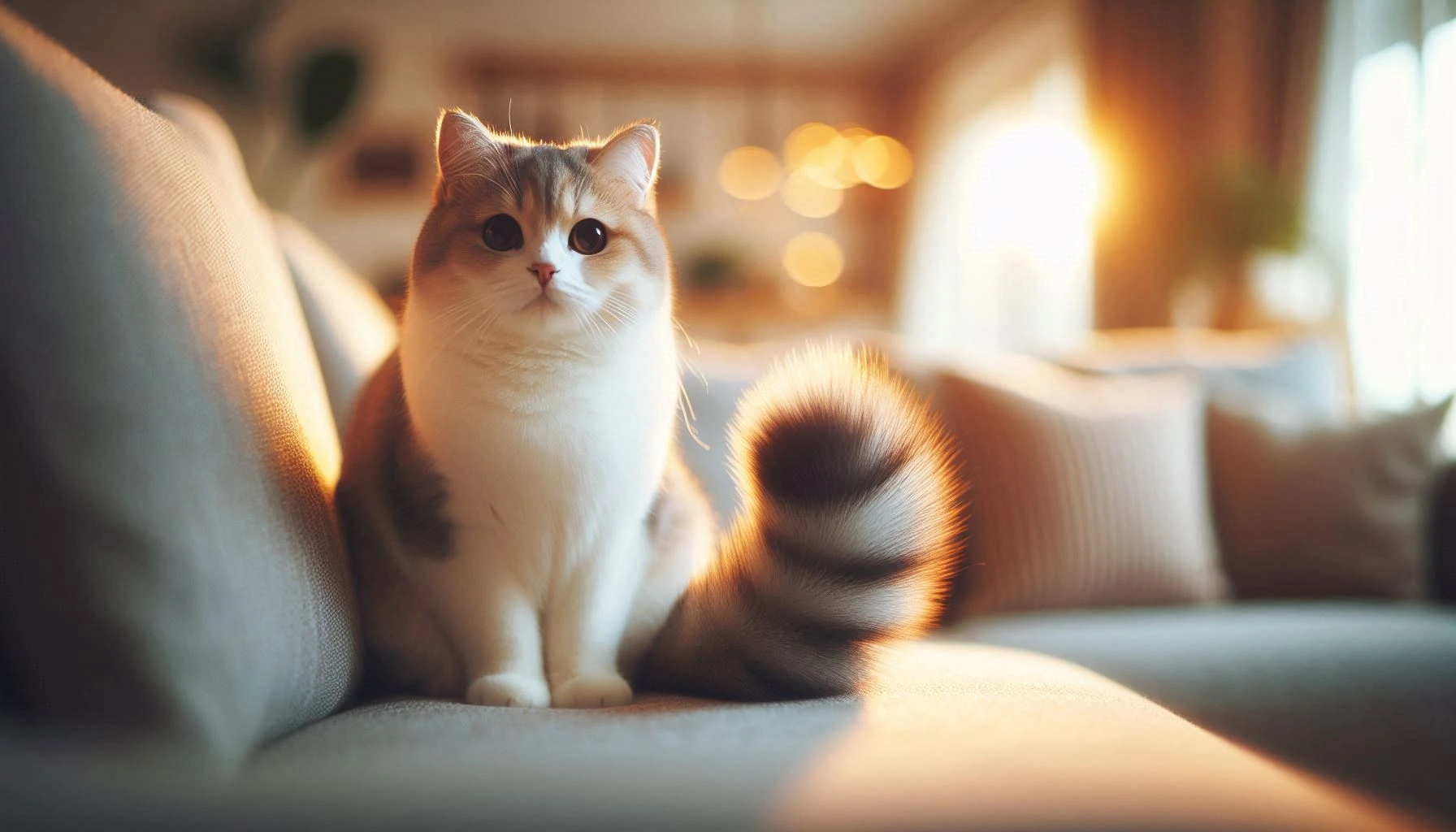
How Cats Express Feelings through Their Postures
Cats beyond tails rely on the entire body to express moods. A cat holding his body in a relaxed posturing, with its eyelids semi-open and forward-facing ears, may be assumed to feel perfectly content. On the other hand, a cat whose body is tensed and has flattened ears and a wide-eyed stare may be frightened or angry.
Knowing these tail movements will enable cat owners to respond correctly to these needs that cats may require: space or playing time.
Why Cats Wag Their Tails
Cats wag their tails for several reasons, and what the movement represents may depend on the given situation. While tail wagging is normal in cats, the reason behind it may be anything from curiosity to agitation. Here are a few reasons why your cat might be wagging its tail.
Curiosity or Exploration
One of the most common reasons for tail wagging in a cat is curiosity. A cat is known to move its tail in a slow side-to-side motion when it’s moving into a new environment or investigating something interesting. This is a sign that the cat is focused and intrigued with something in the surroundings. These pets are naturally very curious, so they express this interest through tail wagging during times of exploration.
Irritation or Annoyance
If your cat’s tail is flicking fast and in a sharp manner, it could be annoyed or irritated. It is a sign that the cat feels the need to caution you that it is losing patience and will soon swat or lash out if the irritation continues. You might notice this when you have been petting your cat for too long or sometimes just because something is bothering it. This sign will help you to make space for your feline friend before frustration sets in.
Excitement or Playfulness
In this case, it will twitch rapidly, almost at the end of it, if a cat is playful or excited. Mostly, this happens in the case of playtime or when your cat is a hunting mood and getting ready to pounce onto something such as a toy or object. This kind of tail only shows readiness for action and acts as a sign of eagerness to have some fun.
Focus and Concentration
Cats also use their tails when focused, such as when they are stalking or hunting a toy. A hunting cat typically keeps the body low to the ground, and its tail twitches a little as it focuses on its prey. The twitch in this case is a part of how the cat prepares itself before pouncing on it, indicating that the cat is fully focused on what it is doing.
Feeling Irate or Threatened
Large sweeping motions of the tail tend to indicate agitation or fear in cats. It’s a definite indication that something within the environment is causing discomfort to the cat. At this point, it’s best to allow the cat to have some space and take away any stress-inducing factors because such a swishing tail may precede more assertive actions depending on how the issue escalates.
Indication of Resting or Contentment
Sometimes, a resting cat may have its tail swishing or waving gently. This usually shows that your cat is happy and relaxed but never loses vigilance. It is one of the most common behaviors of a cat while it feels lazy but is attentive to its surroundings.
Defensiveness or Aggression
A fearful or hostile cat will raise its tail and then start hashing it in large, rapid motions. This is actually a threat signal that the cat is ready to defend himself and can become vicious if the perceived danger does not pass. It typically occurs with hissing or growling and is meant to make the cat look bigger as well as much more threatening.
Understanding Other Cat Tail Gestures
In addition to wagging, cats use other types of tail movements to show various emotions. Knowing the other tail signals will help you better understand your cat’s feelings as circumstances change.
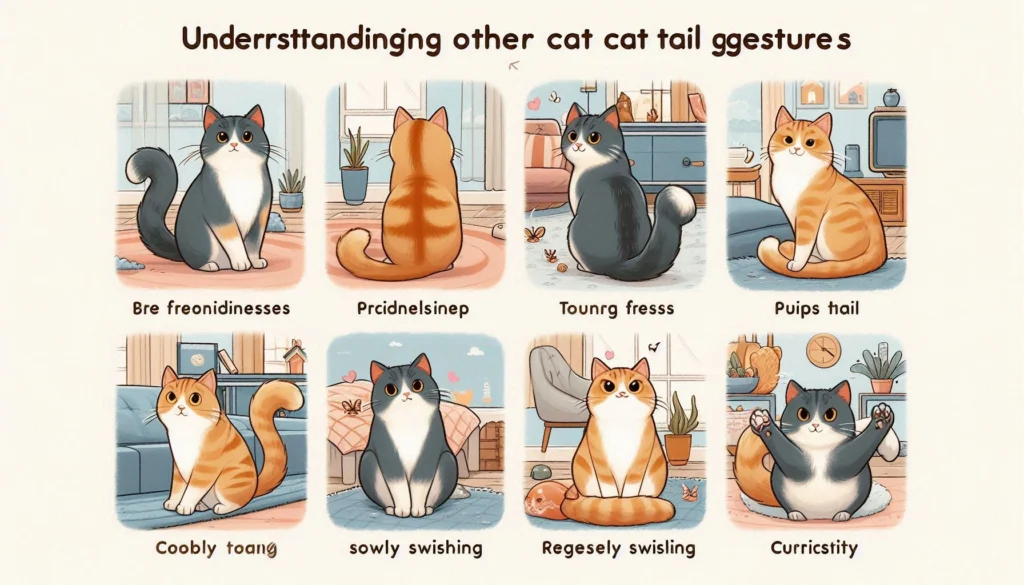
Tail Upright and Quivering
When your cat holds its tail upright and quivers a little bit, it’s usually indicative of excitement or happiness. Your cat may have this behavior when it is greeting its owners or simply if the cat is having an exceptionally good day. It is a friendly gesture, and also often, you’ll notice that your cat leans its head against you simultaneously.
Tail Tucked Between Legs
The fear or submission sign is A tail tucked between the legs. It is most common with cats and indicates that they are afraid or intimidated. They do this by pulling in their tail between their legs to make themselves look less of a threat. They’re not here to fight.
Tail Held Low and Stiff
A cat that keeps the tail low and stiff is most often anxious or unsure of what is going on in their environment. The movement of the tail could be right before the animal watches for a danger, therefore on high alert. Make sure that you give your cat time for itself when you notice this and other such behaviors because they might feel stressed or anxious.
Tail Wrapped Around Their Body
The general tendency among cats is to wrap their tails around themselves when they are sitting or lying down, which usually indicates that they feel relatively calmer and more comfortable. This is a self-calming gesture where the cat seems to be relaxed but still conscious of the surroundings.
Misinterpreting Cat Tail Behavior
When it comes to a cat, sometimes their tail can be a little tricky to decode, especially to pet owners who are mostly dog owners. Differences in the communication of the two species on their tails will suggest messages that should not be mistaken when you encounter them.
Differences Between Dogs and Cats in Tail Communications
One of the common misconceptions that people who are pet owners make is relating a wagging tail of a cat to a wagging tail of a dog. The fact is that a wagging tail of a dog usually means it is in a happy or excited mood. The same, however is not applicable to the case of cats. In fact, a wagging tail of a cat can have a negative meaning such as annoyance or even aggression. Thus, it is very important to know that a wagging tail in a cat does not necessarily imply that it is a friendly creature.
Other Factors Affecting Tail Wagging
Other factors like the environment, their health, or even some other animals could generally make a cat’s tail wag, and it is quite essential to look at the entire context of the situation in order to find out what your cat is trying to get across. For instance, a cat wagging its tail with purring and kneading is probably contented. As soon as it experiences a similar wagging of its tail motion amidst a tense encounter with another animal, it might indicate fears or aggression.
How to Respond to Your Cat’s Tail Movements
Knowing how to respond to your cat’s tail movement can improve the quality of your relationship with it and prevent undesirable behavior. Here’s how you can interpret your cat’s tail language and find out how to respond to it .
Reading the Situation: Tail Wagging in Context
Observe the general situation as your cat goes around with its tail. Is your cat playing, exploring, or resting? The position in which you view the situation will help you determine what the tail wagging means. For instance, if your cat is playing, a gently swaying tail implies that the cat’s excitement is being expressed. On the other hand, a flicking tail when your cat is resting simply means that it is getting irritated.
Respect Boundaries
Cats are independent creatures and always require personal space. If you notice your cat’s tail is wagging very rapidly, it may be a call for time off. Respecting these boundaries will prevent overstimulation and support maintaining a harmonious relationship with your pet.
To Stimulate Playfulness or Comfort
While the tail of your cat wags spasmodically, that is the perfect time to engage in some interactive play. Toys which resemble hunting can be provided, such as feather wands or balls, to engage in a play session with your cat. Similarly, if the tail of your resting cat is gently flicking, then you can provide soft pets or give it a space to rest.
Conclusion
A cat’s tail has great communicative potential, so you get valuable insight into what is going on in its mind or what it is trying to tell you. Knowing why cats wag their tails helps build a closer and more positive relationship with your feline companion. Irrespective of whether your cat is merely curious, irritated, or playful, pay attention to what is happening to its tail and body as a whole – so you can find out about all moods and react accordingly.
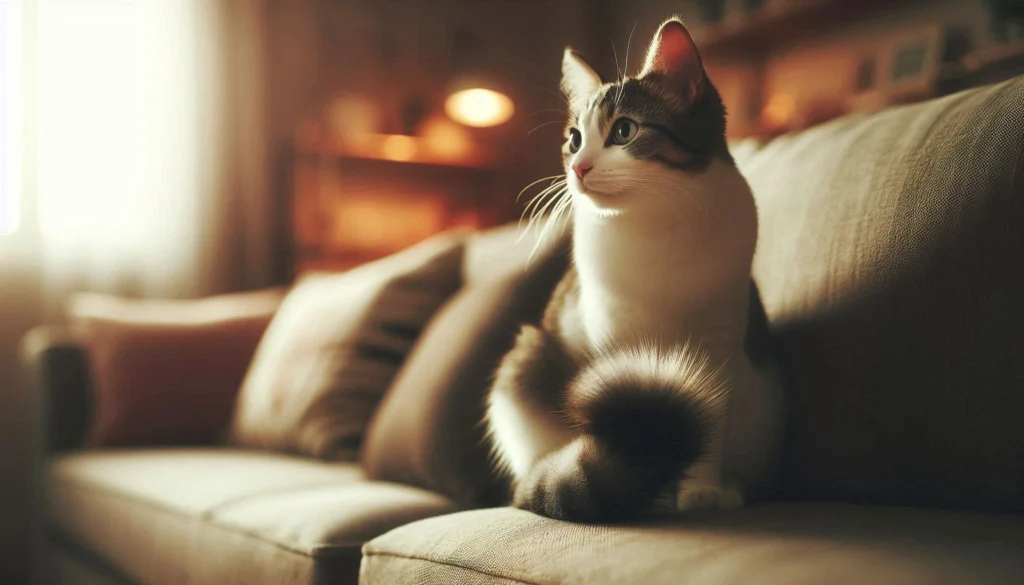


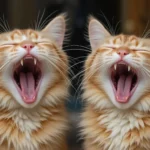

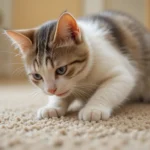

2 thoughts on “Why Cats Wag Their Tails: A Powerful Guide”